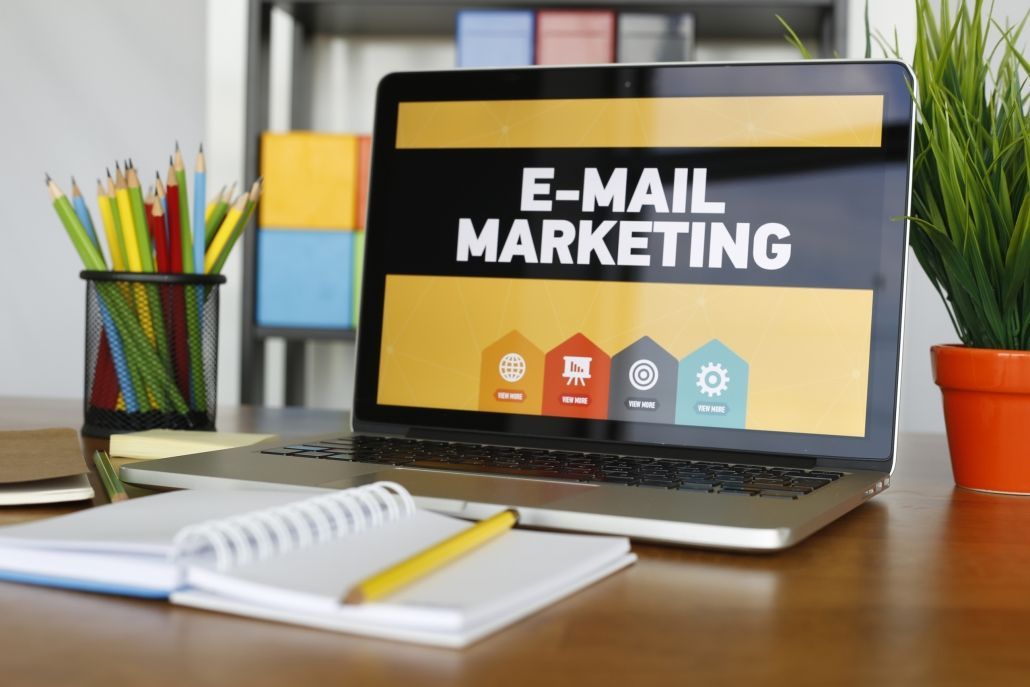Up until recently, ecommerce was the game of a few retailers who could afford it. With online sales currently averaging on $3.5 trillion globally, however, it is clear that ecommerce is growing by the day. While this means that the barriers for entry are now laxer, it also means the competition is much more fierce. With businesses of all ages and sizes in the market, it becomes critical for any business to invest in their ecommerce digital marketing tactics to ensure that they get the amount of exposure they need to thrive in the industry.
Unsurprisingly, some brands are seen going from strength-to-strength by going the extra mile for their customers. These continue to grow in sales and popularity and end up becoming brand evangelists and master digital marketers – no matter how much or who their competition is. In the recent past, these brands were exclusively big players with massive budgets. Now, however, we also see indie brands with lesser budgets and resources making their way to the top – proving that simply having money is not enough.
So what is it they do that makes them stand out from the crowd? Below, we explore 10 key elements used by the best ecommerce platforms in their digital marketing strategies.
Keep The Branding On Point

Ever wonder why some brands catch on to people faster than others? The key is in their branding. When it comes to buying from brands, it is not just about the products. If customers do not recognize an ecommerce retailer as a brand, they will not trust them, and never buy from them – no matter how great or useful their goods may be. This makes it extremely important for companies to ensure that they have their own brand that is right on track. They must keep in mind that the brand is in fact the public face of the company and the little things that customers will remember them by.
The path to good branding for ecommerce digital marketing begins with brand items, such as the company name, tagline, color codes, and core designs. These form the base of the company’s image. Then comes the website, which should keep portraying these brand values. The content on the website, such as those on landing and about pages, the text format must be simple and clear to keep any confusion at bay. Social media pages should always be updated with the latest information on business operations and have relevant information, such as an address, location, and phone number. The key, here, is to show to prospects that the company selling goods is a brand that is working for a cause – to help serve its customers.
Optimize Content for Onsite SEO

Search Engine Optimization (SEO) had its beginnings as a snake oil technique used by conniving salesmen who used dishonest tactics to boost their website’s rankings. That is not the case anymore. Today, when online buying is common, having good onsite SEO is a legitimate ecommerce digital marketing strategy for any business to have their websites appear in top spots in user search lists. By using their content in a way that maximizes customer-searched keywords and yet appears natural, retailers can have their ecommerce websites ranked high on search engines such as Google. Onsite SEO is of two types – paid and organic.
The best ecommerce websites make it a point to drive up their website’s search engine ranking as organically as possible. As mentioned before, this involves having the right keywords in the right places. To achieve this, retailers must conduct in-depth keyword research, and find out the exact words their target market uses to search for products. For instance, if a furniture store wishes to become popular in the US, they should see to it find the core keywords that match the searching habits of this target market. With the help of tools such as MOZ, and SEMRush, ecommerce businesses can keep their SEO strategy updated with the latest algorithms and best practices.
Invest in Pay-Per-Click Advertising (PPC)

While organic methods do have their merits, they require quite a bit of time and patience to develop. In a situation where competition is fierce, getting the business popular is very time-sensitive. It is therefore important for businesses to have the right ecommerce digital marketing tools that can give the ecommerce store the boost it needs. The only way to accomplish this today is through Pay-Per-Click advertising (PPC). As the name suggests, this is a paid advertising method where the brand pays ads networks like Google a fee only when someone clicks on their advertisement. These are simple and tend to have a higher conversion rate than other PPC platforms while staying on the more affordable side.
Depending on the ad network and purpose, there are several types of PPC advertisements. The most common are paid search ads, which are mostly text-based and appear when people use search engines like Google or Bing to search for a particular item. Then comes display ads, which appear in a banner form on ad hosting websites, and have items that are more personalized to the user’s search history. This is mostly used for retargeting. The third type is product listing ads, which appear as shopping links with images directly under search results. Last but not the least, come social media ads, such as those on Instagram and Facebook, as well as promoted pins on Pinterest.
Make The Best Of Email Marketing

In an age when customers are all about messengers and social shopping, one might doubt if email marketing has any place at all. Though not visibly connected with the world of online shopping, emails can turn out to be a solid ecommerce digital marketing tool, provided they are utilized correctly. This is mainly people still use emails for things like checkout registrations, availing discounts, and other value-added services. Retailers can easily use this as an opportunity to market their products and services and encourage customers to return to their site and make a purchase.
There are two distinct ways in which retailers can obtain emails for marketing. The first is through direct interaction i.e. when customers directly enter their email during checkout. The second is through value-added content, such as guides, quizzes or other exclusive content that require the prospects to enter their email. At this point, there are a variety of emails that marketers can send to start the conversation and keep it going. This includes confirmation and welcome emails, cart abandonment emails and buyer receipts, product updates, and buying recommendations. The key, here, is for businesses to slowly but surely encourage prospects and former customers to return to their ecommerce website.
Use 3D Visualization For Product Imagery

As mentioned before, trust and reliability are the core values that lie beneath ecommerce digital marketing . If a retailer cannot prove themself as authentic, they will not be successful. Having good products is, of course, a requirement for this. In the world of ecommerce, however, customers do not actually have tangible access to the goods they are buying. Photos are helpful, but they are not always the most convincing, especially when most customers know that they come with their set of limitations. In such circumstances, the only way for retailers to showcase the authenticity of their products is through CG photos.
Photorealistic 3D rendering instills trust in customers like no other. These are highly interactive, offering prospects an in-depth virtual view of the product. Thanks to high-end digital features such as 3D animation and 360-degree view, shoppers can view every single detail of the item they are interested in. CGI is also easier and more affordable. All retailers need to do is submit a few high-quality photos of their products to a CGI studio. The 3D artists will model the goods in 3D, put them on any digital background you want, and render photorealistic images. This way, product modeling services can provide clients with any type of highly converting marketing visual.
Harness The Power Of Social Shopping

The role of social media in online shopping today has evolved from being a static platform for social marketing to an active search marketing platform. With people sharing all kinds of content on social media platforms, retailers have a great chance of using them for social shopping. Besides boosting sales, it also makes for fantastic inbound ecommerce digital marketing . Social shopping drives sales by offering a level of ease that was never possible before. Customers can literally buy anything they want as if they were scrolling their social media feed. This has a wonderful ripple effect, as the more people like and buy products from a brand, the more they will share the same. This leads to an increase in popularity, which in turn encourages more sales.
Social ecommerce works through shoppable imagery links that are integrated on the platforms. While Pinterest with its visual search features is the most advanced in this department, Facebook and Instagram too are not far on their heels, especially with their brand new social shopping features. To set up social shopping, all that a retailer needs to do is set up their business profile on relevant social media, and upload their product catalog. Once this is done, they can easily tag products in their posts and/or stories posts. That way, when customers get interested in their organic content, they can easily buy them directly from the social media page itself.
Add Social Proof To Digital Content With Customer Reviews

From digital vs traditional marketing, the one method of advertising that has stood its ground is word of mouth. No matter how advanced a retailer’s ecommerce digital marketing strategy is, it is incomplete if it cannot encourage word-of-mouth promotion. This, of course, has its roots in basic human psychology. As social animals, people will always trust the words of someone they know and/or can relate to. Luckily, this is something that businesses can and have used to their advantage. In today’s age of online shopping, the best way to improve word of mouth marketing is through reviews.
With the majority of shoppers using reviews as a major factor in their buying decisions, one can safely say that including reviews in a way that is visible to prospects is a must. A great way to start is by adding top customer reviews on homepages, landing pages, and product pages. These will always catch the eye of the prospect and add social proof to products. They can then go a step further and add these reviews to their email marketing pages, and their social media posts and advertisements. This will instill trust among prospects, as they will connect with the reviewers, seeing themselves in them.
Maximize Your Customer Base With Ecommerce Retargeting

When it comes to digital marketing in ecommerce, retailers know that a large part of the clicks does not end up being actually converted. In fact, for most businesses, the actual conversion rate from ecommerce marketing campaigns is a maximum of 8%. Does this mean that shopping campaigns are a waste of time? Not at all – even when a click does not convert, it still signifies that interaction has been made between the business and the prospective customer. This is actually valuable data that retailers can then use to retarget shoppers who have interacted but conducted any real transactions in the form of online shopping.
Retargeting is a great ecommerce digital marketing method in many ways. Firstly, it helps get many customers on board without having to start the sales funnel process from scratch. Secondly, it is budget-friendly, as retailers already have the basic data on their prospects. Last but not least, it can include many categories of users. This includes those who have visited pages on a retailer’s website and/or social media pages, email subscribers, shoppers who abandoned their carts, and even past clients. The goal, for retailers, here, is to re-engage and encourage said users to revisit and possibly buy from their ecommerce website.
Boost Engagement With Interactive Content

At its core, a good digital or phygital marketing plan is one that can help retailers hold their customers’ attention for the longest time possible. Being authentic with their products is definitely a must for ecommerce stores, but it is not all. People actually need to be encouraged to see and visualize these products for themselves. This is where digital marketing for e-commerce and, specifically, engagement comes in. The more online engagement a retailer can foster, the more likely are people to trust and buy from them. For e-comm businesses, in particular, interactive content is a great way to achieve this.
The best thing about interactive content is the freedom it gives to ecommerce marketers. Unlike other ecommerce marketing tactics like content and social media marketing, there are no strict algorithms or rules here, which gives marketers the chance to be creative. There is a variety of content that qualifies as interactive – this includes pop-ups that offer exclusive content or additional offers, quizzes, guides, contests, polls, and even lotteries. Besides keeping customers engaged, they are also handy in collecting important data for digital marketing – such as emails that clients are generally required to add.
Recruit Influencers to Promote Products

Human psychology is tuned to label information from known sources as credible. Friends, family, and customer reviews take the top place here. Another category that has recently become popular with clients is ‘influencers.” As the name suggests, these influencers are known for their massive following and credibility within a particular niche. They use this popularity to promote products and services that they believe in. This actually opens up a window for a new form of digital marketing for ecommerce businesses, where they can approach and convince influencers. The goal, here, for them, is to co-create content with these businesses that will help build awareness and drive sales.
Contrary to popular opinion, using influencer marketing as one of the ecommerce ideas for furniture is not necessarily costly. While it is true that roping top macro-influencers does tend to rack up a bill of thousands of dollars, marketing with most influencers does not. Many ecommerce businesses are known to approach “micro-influencers” then full-blown top ones. These may not be as “popular” as top influencers, such as the Kardashians, but do have a considerable following and credibility in their niche. While some of these micro-influencers do charge money, most are content with free products. This makes them an even better option for early-stage ecommerce companies, as well as small and medium-sized businesses.
Want to learn more about the evolution of online shopping up to this point? Check out our in-depth article on the brief history of eCommerce.
Competition is super-high in today’s digital age. This makes it important for retailers to be able to secure the best sales in record time. This can be a very slippery slope since the notion of “best” is not the same for all retailers. Context (i.e. niche, products, ideal customers, and budget) is different for every business. One business’s successful plan could be another’s disaster.
But even in this sea of uncertainty, all is not lost. Even if they are different, successful ecommerce digital marketing plans do have some strategies in common. By including these strategies in their plan, retailers can ensure that they attract a high amount of traffic, which goes on to become prospects, leads, and ultimately successful sales.
Looking for enticing visual materials to boost your ecommerce digital marketing strategies? Make no delays – Contact us at CGIFurniture today! We offer high-quality product rendering services . Our team of professional designers will create 3D imagery and animations that your prospects simply cannot refuse.
